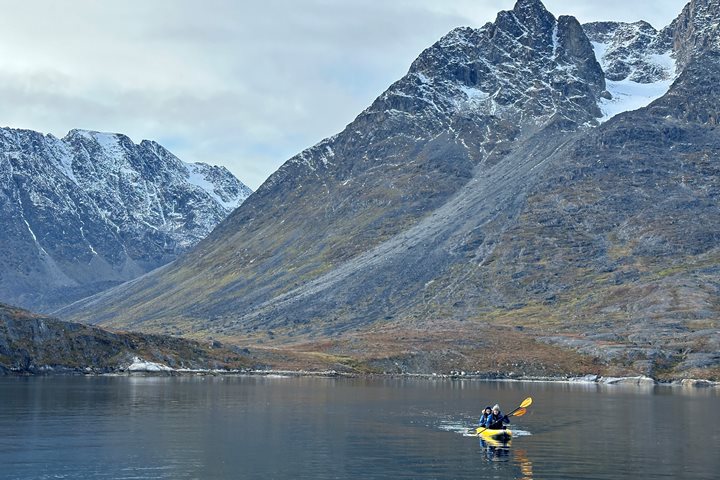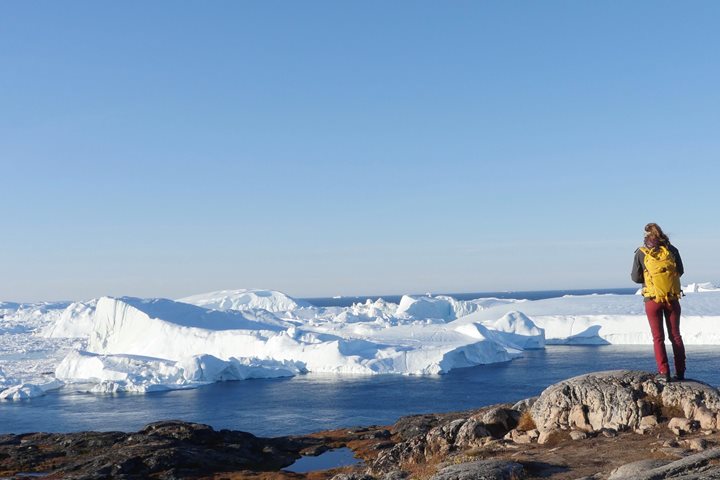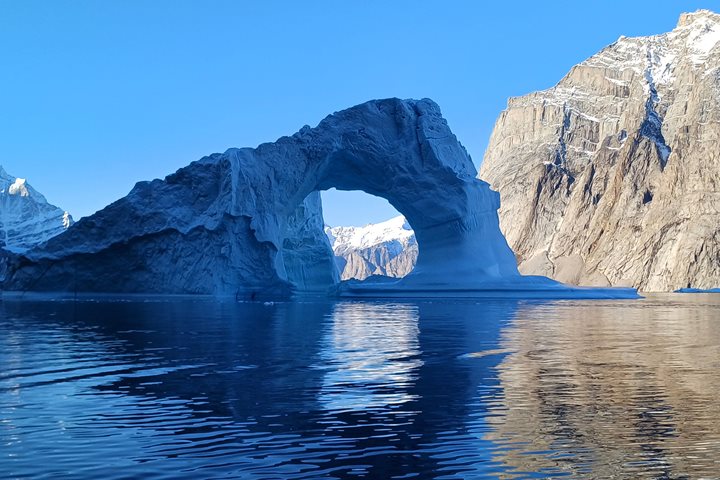National Geographic Endurance spent a restful night in the seemingly inappropriately named Terror Bay before a short reposition to Radstock Bay. Here we enjoyed our first landing in the Canadian Arctic on Devon Island. From the ship, the landscape looked barren, reflective of the harsh climate conditions. But upon arriving on shore, signs of life blossomed from the permafrost. Wildflowers were in bloom, released from their winter dormancy. Highlights included the white buttercup-like Dryas integrifolia and the purple blossom of the Apetalous catchfly. Hidden amongst the sedimentary rocks were biological gems of times past, marine fossils frozen in time. There was also evidence of the recent presence of much larger wildlife: muskox and polar bears. Fur, pawprints, and scat dotted the onshore trail.
Whilst the guests were ashore in Radstock Bay, expedition divers Gail Ashton and Carlos Garrandés took advantage of the calm waters to observe some of the underwater productivity in the bay. The water was littered with jellies and flying snails, signs of the abundant nutrients available after the sea ice has melted, kicking off the marine food chain and hopefully bringing us more marine mammal sightings in the future.
Having stretched our legs and gotten a feel for the sinking, sucking mud of landings in the Arctic, we repositioned once more to Maxwell Bay, a little farther east on Devon Island. Here we enjoyed layers of sedimentary rocks intercepted by erosion processes, creating stunning landscapes in the bay. Several bears were spotted as off-white marks on the rocky hillsides. They may have reared their heads as we approached. Harp seals darted and frolicked on the surface of the bay, and seabirds were unphased by our presence, taking advantage of our wake and enjoying a free ride by our side.







